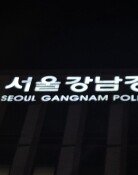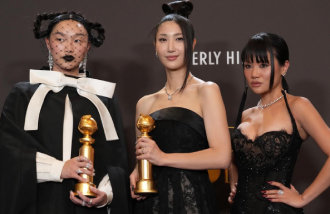Marketers Appeal to Consumer Nostalgia
Marketers Appeal to Consumer Nostalgia
Posted June. 14, 2006 03:45,
The good old days! Marketing that appeals to nostalgia has been on the rise. The marketing technique known as retro marketing makes most of the human tendency to long for food, music, movies, and style that they remember from their youth. Retro marketing is mostly involved in marketing for living products like beverages, fashion, and cosmetics. The companies are not just bringing back their old products though. The recent trend of retro marketing is giving old products a new image to capture both the old generation and the new generation.
Take a look back to the past-
You cant just see ii Bokdongs mom is envious
Sempio, a soy sauce manufacturer, recently reused an old radio commercial just the way it was 45 years ago. The soy sauce has changed since then, but the commercial message song has not the song is still the same song that was sung by the singer Kim Sang-hee in 1961.
The food business is more actively pursuing retro marketing than any other. They say that time does not erode taste.
Last year, Lotte Samkang brought out an ice cream product, the Ice Cubic Cup, that they brought out 36 years ago. Lotte Chilsung Beverages also reintroduced Del Monte Juice just like they did 16 years ago.
The products are released under the same name, but cater to a younger generations tastes.
Haitai Confectionary and Foods made major changes in taste and product design to its Bravo Cone, virtually changing everything except its name. They hired Daniel Henney for the commercials to promote quality. Binggrae also lowered the fat content of its banana-flavored milk and reintroduced it.
The deputy manager of Binggrae says, This is a new strategy to target the fans we already have and a new generation at the same time.
The fashion industry is also involved in the nostalgic atmosphere. This year, 80s style is catching on, while last year, 60s style was the thing.
In cosmetics, the lipstick that women used to see on their mothers dressing tables is popular.
Since global brands like Chanel and Lancome promoted red lipstick at the beginning of the year, brands like Amorepacific, LG Household and Health Care also put out red lipstick as their main products. A product once put aside due to the rise of lip-gloss is now in fashion once again.
Laneige of Amorepacific saw its lipstick sales grow 33 percent in the first quarter (January to March) compared to the same period last year.
Some fashion brands also made comebacks.
Hyungji Apparel bought back Chatelaine, a womens clothing line that was sold by Nonno Fashion in 1989. A brand that once disappeared due to the bankruptcy of Nonno Fashion is now back. Actress Lee Mi-yeon said that she was a big fan of Chatelaine 15 years ago, and happily agreed to appear in their commercials.
President Choi Byung-oh of Hyungji Apparel says, Women in their forties who still remember the Chatelaine brand seek our products.
The power of nostalgia-
Humor, patriotism, fear, romance, and nostalgia
Appealing to certain feelings to capture customers is a principle in the advertising industry. Nostalgia reminiscent of the past is an old favorite.
Professor Kim Min-sik from Department of Psychology at Yonsei University says, After experiencing five unpleasant occurrences, and five pleasant ones, human beings tend to remember the five pleasant occasions more.
Director Nam Yong-woo of Amorepacific says, The past brings back good memories in the old generation, and piques curiosity for the young generation,
Retro marketing is also cheap.
Researcher Lee Yoon-soo of LG Economic Research Institute says, It costs tens of billions of won to introduce a new brand. Compared to that, retro marketing is cheap. He warns, however, that retro marketing may arouse interest, but fail to connect that to sales.
kimhs@donga.com







